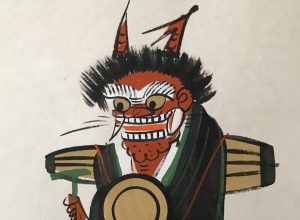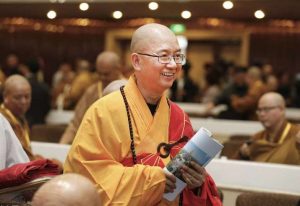
Long-time Hong Kong resident Tony Miller, a former president of Hong Kong’s Oriental Ceramic Society and a member of the Min Chiu Society, recently published a book reconstructing the history of some of the world’s most famous Chinese Buddhist statues. The Missing Buddhas: The Mystery of the Chinese Buddhist Statues That Stunned the Western Art World (Earnshaw Books, 2021) challenges the claims of the late 19th–early 20th century German art dealer Friedrich Perzynski, who asserted that he had discovered several Tang dynasty (618–907 CE) luohan statues in caves to the southwest of Beijing.
Miller, a retired civil servant, first encountered one of the luohan (arhat) statues in the late 1980s at the British Museum in London. “Maybe it was a trick of the light,” he was quoted as saying by Hong Kong’s South China Morning Post newspaper, “but I turned round and there he was staring at me. It took a while to register that he wasn’t actually staring at me but through me, and the hairs on the forearm went straight up.” (South China Morning Post)
After a later encounter with a similar luohan statue at New York’s Metropolitan Museum, Miller’s journey into the history of the statues began. The explanation he found first was in a short work published in 1913 and titled Jagd auf Götter (Hunt for the Gods), by Friedrich Perzynski.
Perzynski’s story paints him as a sort of Indiana Jones character in search of historical treasures, and he writes of setting off on his adventure:
I draw up my fur collar, put on big black glasses to protect my eyes against the blowing dust and hurry away from the railway station to a nearby lamaist temple. I have no rifle with me, although shooting for hare and pheasant is to be had for the asking. But I do have two loaded revolvers and ammunition, climbing ropes and an axe. I am hunting for Gods and not game!*
Miller, however, was skeptical of Perzynski’s account and started work on what began as an academic paper in art history but turned into a full-length book of mystery and intrigue.
Speaking of Perzynski’s writing, Miller noted: “It’s a brilliant piece of writing. He captures time and place in an empire in decline at the beginning of the 20th century in a way which very few people have ever done—the little vignettes in that account about how the workers have been laid off from the Guangxu mausoleum [at the Western Qing tombs] because there’s no money coming out of Beijing any more, and how poverty is rife—you could smell the cooking smells when you read his piece.” (South China Morning Post)
However, Miller also found inconsistencies in the story that Perzynski told. “There is a significant lie at its core,” Miller said, “which is that he didn’t see any of the statues in the mountains that he was wandering around and the caves that he was exploring in that area.” (South China Morning Post)
Miller has concluded that Perzynski may have concocted the literary tale in order to provide a more intriguing source for the statues and thus a better sale price. And yet, he noted that Perzynski’s own telling of finding the caves indicated that it was nearly impossible to reach them, let alone transport large sculptures. He notes that Chinese researchers who later visited the caves found only shards of Ming dynasty (1368–1644 CE) ceramics.
According to Miller, another key element was the chemistry of the clay, which placed its origins west of Beijing and dated to the post-Tang Khitan Mongol Liao dynasty (916–1125 CE). Further details also point to an origin near Beijing and in the Liao dynasty, making Miller fairly certain that this is the true origin of the famous luohan statues.

“Controversy would be nice,” said Miller cheerfully. “I’m 99 per cent convinced that I’ve got it right. I’m not doing anything more than hopefully prizing people away from the Prezynski crutch, and opening it up so others can try and push the thing further forward.” (South China Morning Post)
* Reprinted in Smithies, Richard. 2017. “Addendum: Friedrich Perzynski and the Hunt for the Gods of Yixian” in Monks in Glaze: Patronage, Kiln Origin, and Iconography of the Yixian Luohans. Leiden: Brill. Pages: 192–206.
See more
Chinese Buddhist statues, a German Indiana Jones and his big lie exposed in art history whodunnit by a retired Hong Kong civil servant (South China Morning Post)
Related news reports from Buddhistdoor Global
Mysterious Giant Buddha Statue Discovered in Chongqing, China
Floodwaters Threaten China’s Leshan Giant Buddha
Leshan Buddha Undergoes “Physical” Examination and Repairs
Archaeologists Discover Oldest Buddhist Stele in Tibet
Nepal’s Largest Stone Buddha Ready for Viewing
700-year-old Banknote Found Inside Chinese Buddhist Sculpture
Related features from Buddhistdoor Global
Immortality and Invincibility, Part One: The 108 Luohan System
China’s Buddhist Pride: Consolidation and Custodianship of the Blessed One’s Heritage















